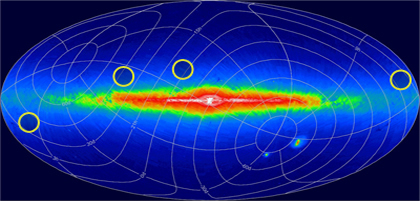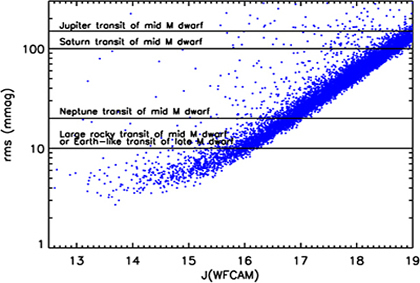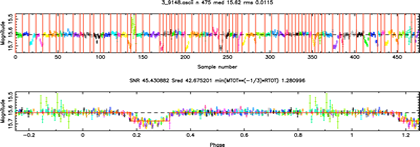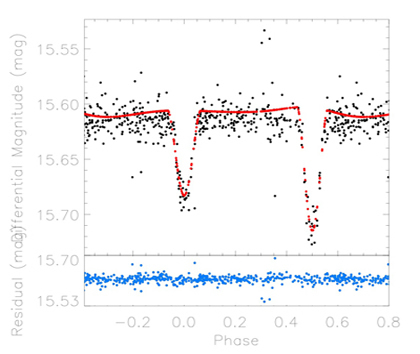The WFCAM Transit Survey
The WFCAM Transit Survey (PIs Hodgkin & Pinfield) has been awarded 200 nights of UKIRT time to perform the first ever systematic near-infrared search for transiting exo-planets around cool dwarfs. Observations started in the summer of 2007, and sufficient data now exists to begin preliminary searches for transits and eclipses for those fields with the best coverage.
Planet discoveries from the WFCAM Transit Survey (WTS) could be small and rocky, and may be warm and potentially habitable worlds, and would be ideal targets for the new breed of highly stable infrared spectrographs (including PRVS and NAHUAL).
Background
Searches for extra-solar planets have, for the most part, targeted solar analogues via precise spectroscopy of individual stars using large aperture telescopes (e.g. Butler et al. 2006), or wide-angle photometry searching for transits in large numbers of objects in the field using very modest telescopes (e.g. Horne 2003, Cameron et al. 2007). In excess of 340 exo-planets are now known orbiting around 290 stars, the vast majority of which are gas giants with masses close to Jupiter's. Recently, transit experiments have come to the forefront, by detecting systems in which fundamental planetary parameters (mass, radius, atmosphere) can be measured (to date there
are 58 transiting extrasolar planets).
Targetting M Dwarfs
Cool stars are up to 10 times smaller than solar-type stars, and significantly fainter. The theory of planet formation, via core accretion, predicts that gas giants should be extremely rare around M dwarfs, while rocky planets would form just as frequently as around higher mass stars (Laughlin et al. 2004, Ida & Lin 2005). However, a handful of results seem to be at odds with this (e.g. Delfosse et al. 1998, Rivera et al. 2005) and suggest that at least some M dwarfs have Jupiter mass planets. The available sample for precision spectroscopic observation is rather small (e.g. Bonfils et al. 2005). The transit method is potentially more efficient and, thanks to the smaller stellar radii, capable of detecting smaller planets around such stars. A transiting earth-like planet for example, would cause a detectable 1% transit of a 0.1Msun star. However, cool stars are much fainter at optical wavelengths, and existing optical transit surveys lack the sensitivity to find such planets. In the infrared, where cool stars are brightest, the search for transiting cool star planets becomes viable.
Data Processing
CASU (Cambridge Astronomical Processing Unit) process the raw WFCAM frames as the data are ftp'd to Cambridge from UKIRT on a daily basis. Jayne Birkby and Simon Hodgkin at the IoA are responsible for the further processing steps required to turn the WTS calibrated images into source lightcurves.
Members of the WTS can follow this link for access to the first release (release 0.1) of the WTS.
Release 1.0 is now ready for download
WTS candidates from the 19 hour field
WHT ISIS proposal for spectroscopic followup of the 19hr field
Candidates and observing programme for the August IAC80 run are here




